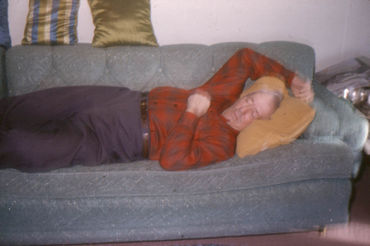
My theory is that we have a hunger to know being--to know all of what exists, is actually there, even if it is just a man sleeping on the sofa. Most likely, this hunger has been given us by natural selection. People with curiosity and interest in the surrounding environment were more likely to survive to reproduce than people who paid no attention to what was around them. Knowledge of what had being gave our remote ancestors an advantage over all the other animals, because we not only knew what things were there; we could think about them, name them, figure out how to use them (if they were useful) or avoid them (if they were dangerous).
At least some of our ancestors specialized in knowing and conquering the dangerous things, such as lions, venomous snakes, and hostile humans from the tribe next door. Perhaps to know and conquer these things was a sexual display, intended to impress potential mates.
So pronounced was our hunger to know being--including the dangerous types--that we turned to fiction to come up with even more beings than actually existed. We created fiction--in prehistory as legends and myths; in modern times as novels and movies. To create new beings, we deformed the existing ones--gave them fictional features, such as the horn on the otherwise horselike unicorn. Some of these deformed beings were fictionally dangerous--ie, destructive if they had really existed. The fictional deformed-destructive beings were especially palatable to some of us who had inherited the genes for liking that sort of thing. And so the horror movie fan came into being.
Note: Some of the thoughts in this post are inspired by my reading Joseph Carroll's Literary Darwinism: Evolution, Human Nature, and Literature, and thinking about how it applies to horror movies.
George Ochoa
No comments:
Post a Comment